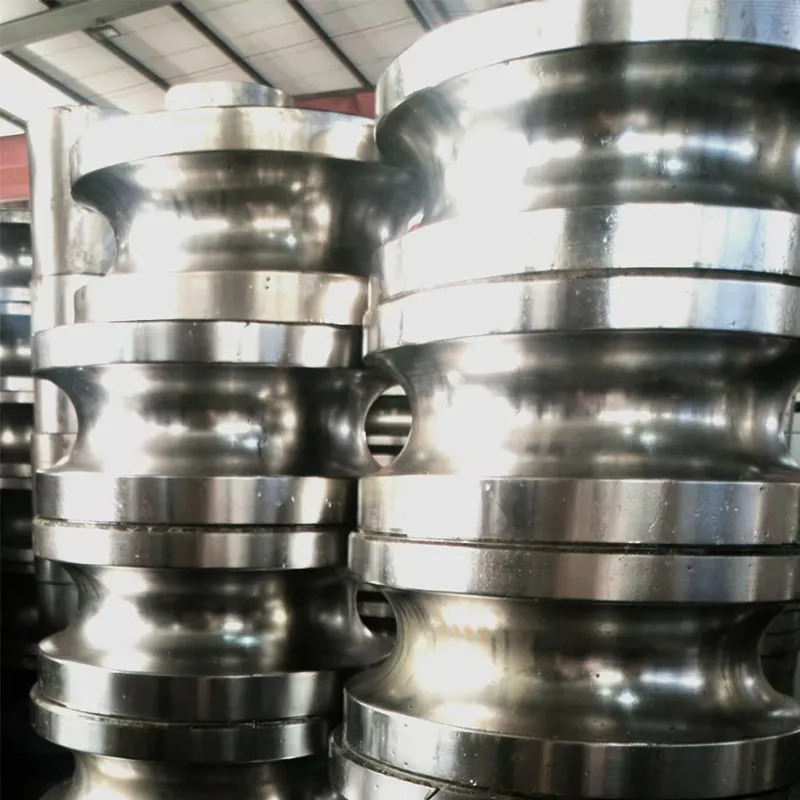Coil Unwinding and Straightening Machine for Efficient Metal Processing Solutions
The Importance of Decoiler Straighteners in Modern Manufacturing
In the fast-paced world of modern manufacturing, efficiency and precision are paramount. Among the numerous technologies employed to enhance production processes, the decoiler straightener plays a crucial role. This sophisticated piece of machinery is integral in the processing of metal sheets and strips, ensuring that the material is fed into production lines accurately and smoothly.
What is a Decoiler Straightener?
A decoiler straightener is a combined machine designed to uncoil and straighten metal sheets or strips, often made of steel, aluminum, or other alloys. The device typically consists of two main components a decoiler or uncoiler, which unwinds the coil of material, and a straightener that removes any bends or curvature in the metal. Together, these components prepare the material for subsequent manufacturing processes such as punching, cutting, or welding.
The Functionality of Decoiler Straighteners
The functionality of a decoiler straightener is multi-faceted. When a coil of metal is delivered to the production floor, it is usually tightly wound and may exhibit various imperfections due to the coiling process. Such imperfections can lead to inaccuracies in downstream operations, resulting in wasted material and increased costs. The decoiler straightener alleviates these issues by
1. Unwinding the Coil The decoiler section unwinds the coil in a controlled manner. This is achieved using a variety of mechanisms, including hydraulic or electric drives, which ensure a smooth and consistent feed of the material.
2. Straightening the Metal As the material is unwound, it passes through a series of rollers or slats in the straightening section. These rollers apply pressure to the metal, effectively straightening out any bends or curves and ensuring a flat, uniform profile.
The Benefits of Using Decoiler Straighteners
decoiler straightener

The incorporation of decoiler straighteners in manufacturing processes yields several notable benefits
- Enhanced Precision By ensuring that materials are straight and uniform, decoiler straighteners help to enhance precision in subsequent manufacturing operations, such as stamping or laser cutting.
- Improved Efficiency The ability to handle coils directly boosts production efficiency. Operators do not need to perform manual straightening, which can be labor-intensive and prone to error.
- Reduced Material Wastage Straightened materials are less likely to be rejected, thereby minimizing waste. Additionally, the right feed controls reduce the risk of material damage during processing.
- Automation Potential Many decoiler straighteners integrate seamlessly with automated production lines. This connectivity allows for real-time monitoring and adjustments, further enhancing efficiency.
Applications Across Industries
Decoiler straighteners are versatile pieces of equipment used across various industries. They are commonly found in the automotive, aerospace, construction, and electronics sectors, where the need for precise metal fabrication is critical. In the automotive industry, for example, the straightening of metal strips is vital for producing high-quality parts that meet stringent safety standards.
Conclusion
As manufacturing continues to evolve, the demand for efficient and reliable processing equipment grows. Decoiler straighteners are integral to fulfilling this need, offering enhanced precision, improved efficiency, and reduced material wastage. For manufacturers seeking to optimize their operations, investing in a quality decoiler straightener can prove to be a wise decision, setting the stage for greater productivity and success in the competitive landscape of modern manufacturing. As technology advances further, we can expect these machines to become even more sophisticated, utilizing smart technologies and automation to meet the challenges of tomorrow’s manufacturing needs.
-
High Frequency Straight Seam Welded Pipe Production Line-BzZhou Xinghua Machinery Equipment Manufacturing Co., LTD.|line pipe steel&welded gas pipeNewsJul.30,2025
-
High Frequency Straight Seam Welded Pipe Production Line-BzZhou Xinghua Machinery Equipment Manufacturing Co., LTD.|High Precision&Automated SolutionsNewsJul.30,2025
-
High Frequency Straight Seam Welded Pipe Production Line - BzZhou Xinghua Machinery Equipment Manufacturing Co., Ltd.NewsJul.30,2025
-
High Frequency Straight Seam Welded Pipe Production Line-BzZhou Xinghua Machinery Equipment Manufacturing Co., LTD.|Precision Welding, High EfficiencyNewsJul.30,2025
-
High Frequency Straight Seam Welded Pipe Production Line|BzZhou Xinghua|Precision Welding&EfficiencyNewsJul.30,2025
-
High Frequency Straight Seam Welded Pipe Production Line - BzZhou Xinghua|Precision Engineering&EfficiencyNewsJul.30,2025


